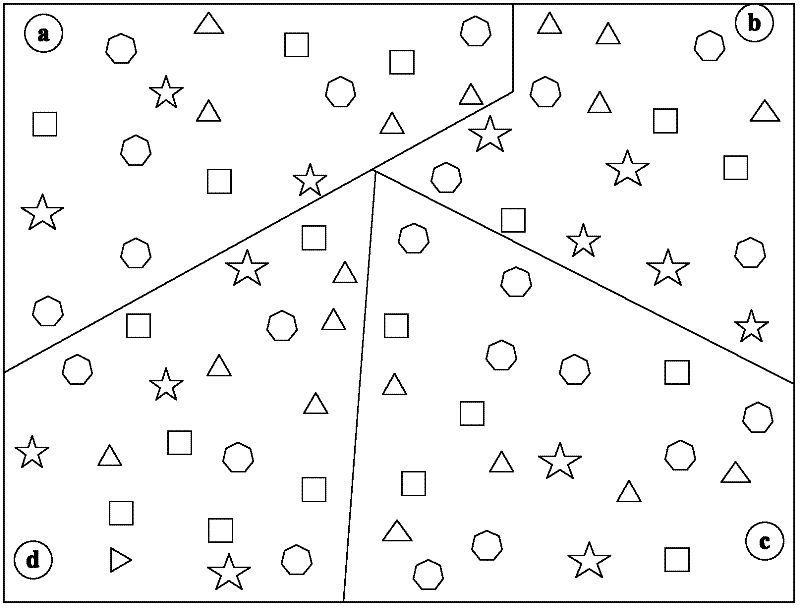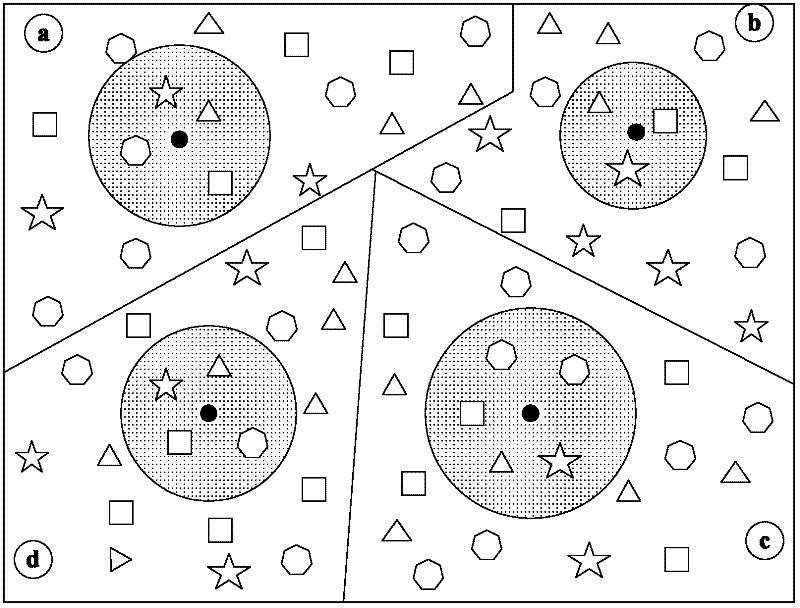Clustering method for efficiently utilizing energy in perception layer of environment monitoring internet of things
A technology of environmental monitoring and Internet of Things, applied in the field of Internet of Things, can solve problems such as uneven network energy consumption, difficulty in fully utilizing the master, uneven distribution of cluster heads, etc., and achieve the effects of prolonging life time, balancing energy consumption, and optimizing distribution
- Summary
- Abstract
- Description
- Claims
- Application Information
AI Technical Summary
Problems solved by technology
Method used
Image
Examples
Embodiment Construction
[0028] The invention aims to solve the problem of "perceptual void" of large-scale environmental monitoring in the Internet of Things, and can effectively prolong the life time of the network. The present invention will be further described below in conjunction with drawings and embodiments.
[0029] figure 1 It is a structural diagram of the environmental monitoring Internet of Things network of the present invention, and different shapes such as triangles, squares, and pentagrams represent different types of wireless sensor nodes 1, such as temperature, humidity, and pressure sensor nodes. First deploy the network, wireless sensor nodes 1 are randomly deployed, the area S of the monitoring area is known, and the number of sensor nodes 1 is N (the optimal number of cluster heads is M opt ), each sensor node 1 has a positioning device (such as GPS), and the base station 2 is located directly above the deployment area.
[0030] Step 1: Node location detection storage stage
...
PUM
 Login to View More
Login to View More Abstract
Description
Claims
Application Information
 Login to View More
Login to View More - R&D
- Intellectual Property
- Life Sciences
- Materials
- Tech Scout
- Unparalleled Data Quality
- Higher Quality Content
- 60% Fewer Hallucinations
Browse by: Latest US Patents, China's latest patents, Technical Efficacy Thesaurus, Application Domain, Technology Topic, Popular Technical Reports.
© 2025 PatSnap. All rights reserved.Legal|Privacy policy|Modern Slavery Act Transparency Statement|Sitemap|About US| Contact US: help@patsnap.com



